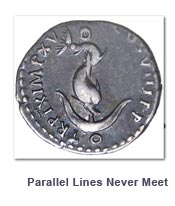Date/Time
Thursday, February 9, 2012
4:00 pm PST
Location
UCLA William Andrews Clark Memorial Library
2520 Cimarron Street
—a lecture by Terry Belanger, Founding Director, Rare Book School, Professor Emeritus, University of Virginia
Co-sponsored by Charles E. Young Research Library Department of Special Collections

In 1501 the celebrated Venetian scholar-publisher Aldus Manutius first used the motif of a dolphin wrapped around an anchor as his firm’s device or logo, and he subsequently employed it many times on title pages and colophons—as did a variety of piratical imitators, publishers who also appropriated Aldus’s handsome italic typefaces and convenient octavo formats. The dolphin-and-anchor motif was later adopted by William Pickering in nineteenth-century London and Nelson Doubleday in twentieth-century New York, and it remains perhaps the best known of all publishers’ devices.
Erasmus tells us that Aldus derived the anchor-and-dolphin image from a first-century AD Roman silver coin, incorrectly attributing it to the reign of the Emperor Vespasian. In fact, the anchor-and-dolphin device was used only on silver denarii successively issued by Vespasian’s two sons, the Emperors Titus (79–81) and Domitian (81–96). Following Erasmus, historians of the book have ever since consistently misattributed the anchor-and-dolphin denarius, which they tend to exalt as one of the most celebrated of all ancient coins, comparable in importance to the 30 pieces of silver and the widow’s mite.
Numismatists take a different view: the coin has never been of much interest to students of Imperial Roman coins, who almost never mention the Aldine connection.
Terry Belanger’s illustrated lecture, accompanied by a three-dimensional handout, is a case study in the way that different scholarly disciplines can sometimes fail to recognize the utility of evidence easily available from fields outside their own immediate areas of interest.

